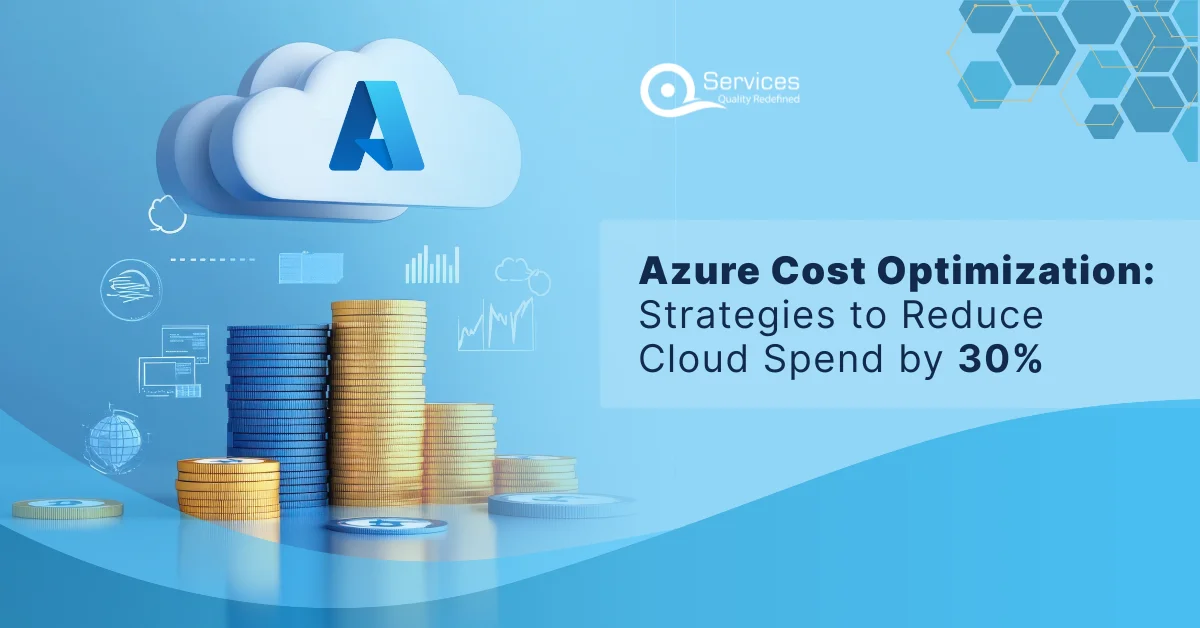
Rewards
.





CANADA
55 Village Center Place, Suite 307 Bldg 4287,
Mississauga ON L4Z 1V9, Canada
Certified Members:
.



Home » Microsoft AI Implementation Costs: Exact Pricing & ROI Calculator for Enterprise [2025]
![Microsoft AI Implementation Costs Exact Pricing & ROI Calculator for Enterprise [2025]](https://www.qservicesit.com/wp-content/uploads/2025/03/Microsoft-AI-Implementation-Costs-Exact-Pricing-ROI-Calculator-for-Enterprise-2025-.webp)
Artificial Intelligence is no longer just a trend, it has become an important tool for businesses to stay ahead of the competition. Companies are using Microsoft AI implementation to improve work processes, automate tasks, and make better decisions. But before starting with AI, businesses must understand the costs, pricing models, and potential return on investment (ROI) to make smart financial choices.
Microsoft offers AI tools like Azure Cognitive Services, ChatGPT 4 API, and Azure OCR, which can help businesses work more efficiently. However, using AI comes with costs, including setup fees, charges for AI tools, data storage, and training AI models.
In this blog, we will explain how much Microsoft AI costs for businesses and share an ROI calculator that help to estimate the possible business benefits.
Several factors influence the cost of using Microsoft AI.
Different AI tools have different pricing. The cost of services like GPT-4 API pricing, DALL·E 3 price, and Azure Cognitive Services pricing depends on how much they are used and the amount of data processed.
Businesses using Microsoft Azure AI should check Azure pricing model plans, which include:
AI systems need a lot of data to work well. Services like Azure OCR pricing and Whisper API pricing charge based on how much data is stored and processed.
Adding AI to an existing system takes time and money. Businesses should look at enterprise Microsoft AI cost analysis and budget planning to decide whether to use ready-made AI tools or custom AI solutions.
Investing in AI should not only be about the cost. Businesses should also focus on how much they will gain from using AI. ROI calculations for Microsoft AI investments in business operations help companies see the benefits, such as:
Now, let’s break down Microsoft AI pricing models for businesses, including a detailed cost comparison.
When businesses think about Microsoft AI implementation, the first concern is cost. But pricing isn’t as simple as paying a fixed amount, it depends on how you use AI, which services you need, and how much data you process.
To make an informed decision, businesses should look at:
Let’s put it all down in simple terms so you can pick the best plan for your business.
Microsoft provides multiple pricing structures to fit different business needs. Here’s a look at the main ones:
This is the most flexible model. You pay only for what you use—like a utility bill. If your AI usage is low, your cost stays low. If you use more, you pay more.
Best for: Small businesses or startups experimenting with AI.
Example services: GPT-4 API, Azure Cognitive Services.
Pros: No upfront investment, easy to scale up or down.
Cons: Costs can rise quickly if AI usage increases unexpectedly.
This model works like a Netflix subscription. Businesses pay a fixed fee each month or year, regardless of how much they use AI. It’s great for companies that need consistent AI support.
Best for: Mid-sized businesses that use AI regularly.
Example services: Microsoft AI licensing costs, pre-set enterprise plans.
Pros: Predictable expenses, no cost surprises.
Cons: You pay the same amount even if AI usage is low.
Large businesses often handle huge amounts of data that needs custom pricing. Microsoft offers personalized AI solutions based on business size, security needs, and data volume.
Best for: Enterprises managing AI across multiple departments.
Example services: Enterprise Microsoft AI cost analysis and budget planning.
Pros: Fully customized solutions, better support, and security.
Cons: Requires a larger upfront investment.
Apart from the main service fee, businesses should also prepare for additional expenses that come with AI implementation.
Skipping these hidden costs can lead to budget overruns later. Businesses should factor them in before choosing an AI plan.
Before deciding on a pricing plan, businesses should ask:
By answering these questions, businesses can avoid wasting money and find an AI plan that suits their budget.
Alright, we’ve covered the cost side of AI. But how can businesses tell if it’s actually worth it? Let’s find out.
Get free Consultation and let us know your project idea to turn into an amazing digital product.

When businesses invest in Microsoft AI, they want to know one thing: Is it worth the cost?
It’s not just about having cutting-edge technology—companies want to see clear results. They want to know:
That’s where the Microsoft AI ROI calculator comes in. It helps businesses measure if their AI investment is giving them real value—whether through savings, faster processes, or increased revenue.
This section explains:
Practical ways to measure AI’s success in your company.
Real-life stories of businesses that gained value using Microsoft AI.
ROI (Return on Investment) is a way to measure how much benefit you get from the money you spend.
Here’s a simple way to understand it:
If you invest $1 in Microsoft AI and it helps you earn $3, your ROI is positive—you’re making a profit. But if you spend $1 and only earn $0.50, your investment isn’t paying off—you’re losing money.
Why does this matter?
Because every business wants to spend money wisely. Calculating ROI for Microsoft AI investments in business operations helps you understand if the money you put into AI is delivering real value. If AI is helping your business grow and save money, you’ll want to invest more. But if it’s not bringing value, it’s time to adjust your strategy.
The Microsoft AI ROI calculator is a tool that helps you track the financial impact of using AI. It focuses on four main areas:
This helps businesses save money by doing boring, repetitive tasks automatically. This means companies can get more work done with fewer people, saving both time and cash.
Here are some ways AI helps reduce costs:
Example: A finance company used Microsoft AI to process invoices. This saved them $80,000 every year by reducing manual work and cutting mistakes by 40%.
AI helps businesses work faster by handling tasks that would take humans hours or even days. This allows employees to focus on more important work while AI takes care of the routine stuff.
How does AI save time?
Example: A manufacturing company used Azure AI to monitor their machines. This reduced machine downtime by 35%, saving hours of lost work each week.
AI doesn’t just save money—it also helps companies make more by improving customer experiences and helping them make better decisions.
How does AI boost profits?
Example: An online store used Microsoft AI to recommend products to shoppers. This increased their online sales by 25% in just six months.
AI makes everyday work easier by handling routine tasks and making sure things are done rightly and on time.
Here’s how AI improves business operations:
Example: A delivery company used Microsoft AI to track shipments. This reduced late deliveries by 40%, which made customers happier and saved the company money.
It’s important to track how AI is helping your business. This helps you:
How to Measure AI’s Value (Step by Step)
Find out where AI is already making a difference. Ask yourself:
Example: A hospital used Microsoft AI to process patient information. This reduced admin work by 25%.
Write down all the costs of using AI, including:
Example: A business spent $50,000 to set up AI for customer service.
Track how much AI helps by measuring:
More Profit: How much more money is your business earning?
Example: A company saved $100,000 a year by making use of AI to reduce errors and speed up work.
Check if AI’s savings and profits are greater than its costs.
Example: If you spend $50,000 on AI but save $150,000 per year, AI is a smart investment.
A transport company started using Microsoft AI to track their deliveries.
Before AI: They lost $200,000 every year due to delivery mistakes.
After AI: Delivery mistakes dropped by 50%, saving $100,000 a year.
So, Is Microsoft AI Worth It?
If you want to:
…then Microsoft AI is a smart choice. Many businesses already see huge benefits, and tracking AI’s value can prove it works.
Microsoft AI can help businesses to grow, but it also has a few problems. Companies often think about high costs, data safety, and tech troubles. The good news? With the right approach and tools, these problems can be solved. Let’s look at the main issues and how to fix them.
A major worry for businesses is how much AI implementation will cost. Many think it requires a huge budget to get started. But there are ways to keep expenses low:
Example: A retail store lowers 35% of its everyday expenses by using Microsoft Power Platform.
When working with AI, keeping sensitive information secure is a big concern. Businesses that handle customer data or financial records must follow strict privacy rules. Microsoft helps protect this data through:
For instance, a hospital used Azure AI to automate patient scheduling while keeping medical records private and meeting all legal requirements.
Many companies worry that they don’t have employees with the technical knowledge to use AI. But Microsoft makes it easier to adopt AI without needing a team of experts:
For example, A factory used Azure AutoML to predict when machines might break. Since the system is easy to use, their team didn’t need advanced coding skills.
Some workers worry that AI will take their jobs. Others might find it hard to trust new technology. Clear communication and support are key to solving these fears.
Here’s how to make the transition smooth:
A delivery company used AI to handle data entry and taught their workers to manage and improve it. This made work faster and helped employees feel important.
Many businesses still rely on older software and worry that AI won’t work with it. But Microsoft provides tools to make these connections easy:
For instance in banking industry they connected Azure AI to their old accounting setup. This made their work more precise without needing to change everything.
By fixing everyday problems with smart solutions, companies can use Microsoft AI without much hassle. The Microsoft AI ROI calculator also helps keep track of spending and shows how AI helps you earn more.
Share your project idea with us. Together, we’ll transform your vision into an exceptional digital product!

While setting up Microsoft AI costs money at first, it saves more in the long run if planned well. By using AI to handle tasks automatically, grow with demand, and train employees, businesses can work faster and spend less. Understanding Microsoft AI implementation costs for enterprise solutions helps companies plan better and get the most value from their investment.
For a deeper dive into how to smoothly implement AI with expert support, check out our related blog: Building Azure AI Foundry with a Microsoft Solution Partner: A Seamless Implementation Experience.
With careful planning and use of right tools, Microsoft AI can transform how your business operates, delivering both cost savings and better performance for years to come.
The calculator is a tool designed to estimate the costs associated with implementing Microsoft AI solutions in an enterprise setting.
Yes, a basic version of the calculator is available for free, with more advanced features accessible through a subscription.
The ROI calculator can be accessed through the Microsoft AI solutions website or via a direct link provided by your Microsoft account representative.
The tool calculates ROI by comparing the projected financial gains from AI implementation against the total costs over a specified period.
Yes, it includes scalability options to estimate costs for different levels of AI deployment.
It helps in budgeting, planning, and understanding the financial impact of AI implementation.
Yes, you can save your estimates and export them in various formats for further analysis.
The calculator aims to be comprehensive, but it’s always good to consult with a Microsoft representative for a complete assessment.
It includes estimates for implementing necessary data privacy and security measures.
Yes, it includes costs for integrating AI solutions with your current IT infrastructure.
It can generate detailed cost and ROI reports, including visual charts and graphs.

The combination of Microsoft AI, Azure Health Insights, and Azure Cognitive Services is transforming healthcare by allowing smarter and efficient decision-making based on data. These technologies can fundamentally change the conventional practices of healthcare by taking new approaches to enhance

The sector that comprises banking, financial services, and insurance (BFSI) is one of the most vulnerable to cyber threats because of massive volumes of sensitive financial and personal data being handled and processed on a daily basis.

Reports show that up to 30% of cloud spending goes to waste because of unused resources, over-provisioning, and poor planning. For businesses heavily relying on Azure, finding ways to cut costs without sacrificing performance.
Schedule a Customized Consultation. Shape Your Azure Roadmap with Expert Guidance and Strategies Tailored to Your Business Needs.
.





55 Village Center Place, Suite 307 Bldg 4287,
Mississauga ON L4Z 1V9, Canada
.




Founder and CEO

Chief Sales Officer

🎉 Thank you for your feedback! We appreciate it. 🙌